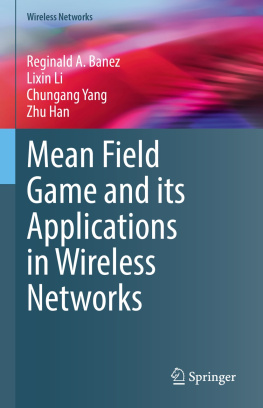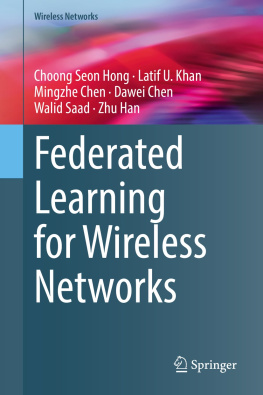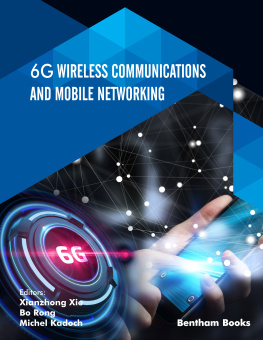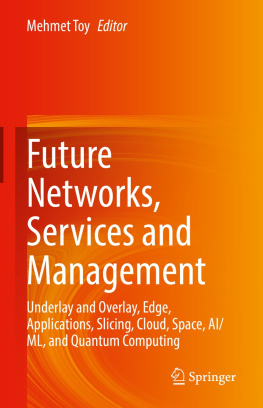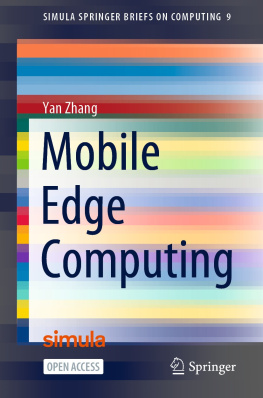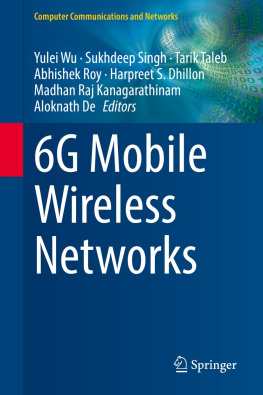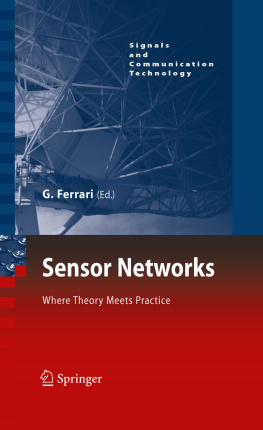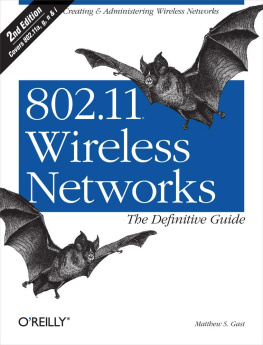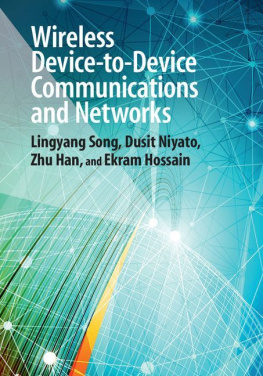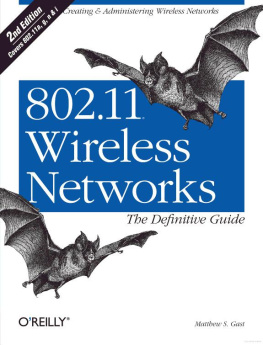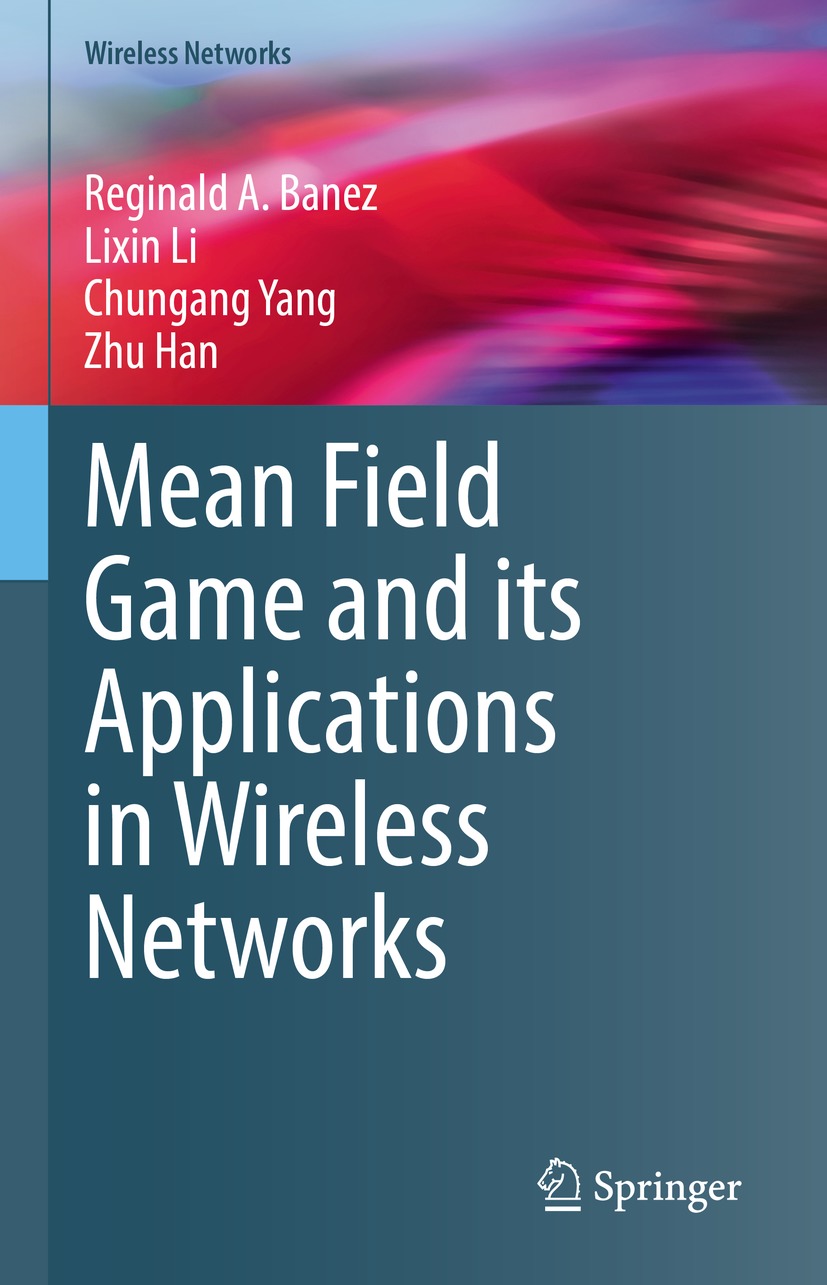Wireless Networks
Series Editor
Xuemin Sherman Shen
University of Waterloo, Waterloo, ON, Canada
The purpose of Springer's Wireless Networks book series is to establish the state of the art and set the course for future research and development in wireless communication networks. The scope of this series includes not only all aspects of wireless networks (including cellular networks, WiFi, sensor networks, and vehicular networks), but related areas such as cloud computing and big data. The series serves as a central source of references for wireless networks research and development. It aims to publish thorough and cohesive overviews on specific topics in wireless networks, as well as works that are larger in scope than survey articles and that contain more detailed background information. The series also provides coverage of advanced and timely topics worthy of monographs, contributed volumes, textbooks and handbooks.
** Indexing: Wireless Networks is indexed in EBSCO databases and DPLB **
More information about this series at http://www.springer.com/series/14180
Reginald A. Banez , Lixin Li , Chungang Yang and Zhu Han
Mean Field Game and its Applications in Wireless Networks
1st ed. 2021

Logo of the publisher
Reginald A. Banez
Department of Electrical and Computer Engineering, University of Houston, Houston, TX, USA
Lixin Li
School of Electronics and Information, Northwestern Polytechnical University, Xian, Shaanxi, China
Chungang Yang
School of Telecommunications Engineering, Xidian University, Xian, Shaanxi, China
Zhu Han
Department of Electrical and Computer Engineering, University of Houston, Houston, TX, USA
ISSN 2366-1186 e-ISSN 2366-1445
Wireless Networks
ISBN 978-3-030-86904-5 e-ISBN 978-3-030-86905-2
https://doi.org/10.1007/978-3-030-86905-2
The Editor(s) (if applicable) and The Author(s), under exclusive license to Springer Nature Switzerland AG 2021
This work is subject to copyright. All rights are solely and exclusively licensed by the Publisher, whether the whole or part of the material is concerned, specifically the rights of translation, reprinting, reuse of illustrations, recitation, broadcasting, reproduction on microfilms or in any other physical way, and transmission or information storage and retrieval, electronic adaptation, computer software, or by similar or dissimilar methodology now known or hereafter developed.
The use of general descriptive names, registered names, trademarks, service marks, etc. in this publication does not imply, even in the absence of a specific statement, that such names are exempt from the relevant protective laws and regulations and therefore free for general use.
The publisher, the authors and the editors are safe to assume that the advice and information in this book are believed to be true and accurate at the date of publication. Neither the publisher nor the authors or the editors give a warranty, expressed or implied, with respect to the material contained herein or for any errors or omissions that may have been made. The publisher remains neutral with regard to jurisdictional claims in published maps and institutional affiliations.
This Springer imprint is published by the registered company Springer Nature Switzerland AG
The registered company address is: Gewerbestrasse 11, 6330 Cham, Switzerland
Preface
The current generation of wireless networks is approaching its limits caused by increasing data traffic, more frequent network usage, and rising number of connected devices. In order to overcome these limitations, enabling technologies such as ultra-dense networks, multi-access edge networks, and massive antenna arrays are proposed as part of the future generation of wireless networks. However, in order to analyze, model, and simulate these technologies, an appropriate mathematical framework that can handle a large number of interacting entities is necessary. Hence, this book focuses on mean field games (MFGs) and their applications in future wireless networks.
MFGs deal with the study and analysis of differential games with infinitely many players. The theory of MFG enables the study of the Nash equilibrium of games with very large number of indistinguishable players. It allows a player to make a decision or strategy based on the state distribution of all the players instead on the individual states of other players. Meanwhile, a mean-field-type game (MFTG), a subclass and relaxed version of MFG, has been applied to applications where the MFG assumptions do not necessarily hold. In MFTG, the number of decision makers may be infinite or finite, the decision makers may not be indistinguishable, and a decision maker may have a significant effect on the state distribution.
This book starts with an overview of the current and future state-of-the-art in 5G and 6G wireless networks. Next, a tutorial on MFG, MFTG, and prerequisite fields of study, such as optimal control theory and differential games, is presented. Afterwards, several applications of MFG and MFTG in ultra-dense networks, social networks, and multi-access edge computing networks are introduced.
Furthermore, the goal of this book is to educate electrical and computer engineers as well as applied mathematicians about the significance of MFG and MFTG in analyzing and designing future wireless networks.
Reginald A. Banez
Lixin Li
Chungang Yang
Zhu Han
Houston, TX, USA Xian, China Xian, China Houston, TX, USA
Acronyms
2D
Two Dimensional
3D
Three Dimensional
4G
Fourth Generation
5G
Fifth Generation
A2A
Air-to-Air
A2G
Air-to-Ground
AEA
Average Estimation Accuracy
AF
Amplify-and-Forward
AP
Access Point
AQI
Air Quality Index
ATC
Air Traffic Control
AWGN
Additive White Gaussian Noise
BS
Base Station
CDF
Cumulative Distribution Function
CNPC
Control and Non-Payload Communication
CU
Cellular User
D2D
Device-to-Device
DC
Difference of Convex Functions
DF
Decode-and-Forward
DQN
Deep Q-Network
EE
Energy Efficiency
eMBB
enhanced Mobile Broadband
F-Cell
Flying-Cell
GPI
Generalized Policy Iteration
GPM-NN
Gaussian Plume Model Embedding Neural Networks
GSC
Ground Control Station
IC
Incentive Compatibility
IoT
Internet-of-Things
IP
Increasing Preference
IR
Individual Rationality
ITU-R
International Telecommunication UnionRadiocommunications Standardization Sector
KKT
Karush-Kuhn-Tucker
LoS
Line-of-Sight
LTE
Long-Term Evolution
MBS
Macro-cell Base Station
MD
Mobile Device
MDP
Markov Decision Processes
mMTC
massive Machine-Type Communications
NLoS
Non-Line-of-Sight
NN
Neural Networks
PC
Payload Communication
PDF
Probability Density Function
PDT
Partial Derivative Threshold
PoI
Point of Interests
PPP
Poisson Point Process
QoS
Quality of Services
RMa
Rural Macro
SBS
Small-cell Base Station
SINR
Signal-to-Interference-plus-Noise Ratio
SNR
Signal-to-Noise Ratio
SVM
Support Vector Machine

